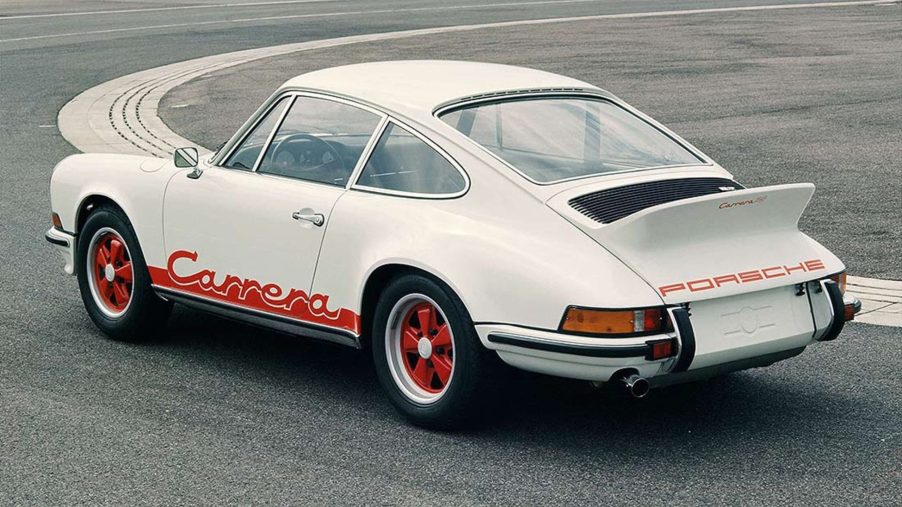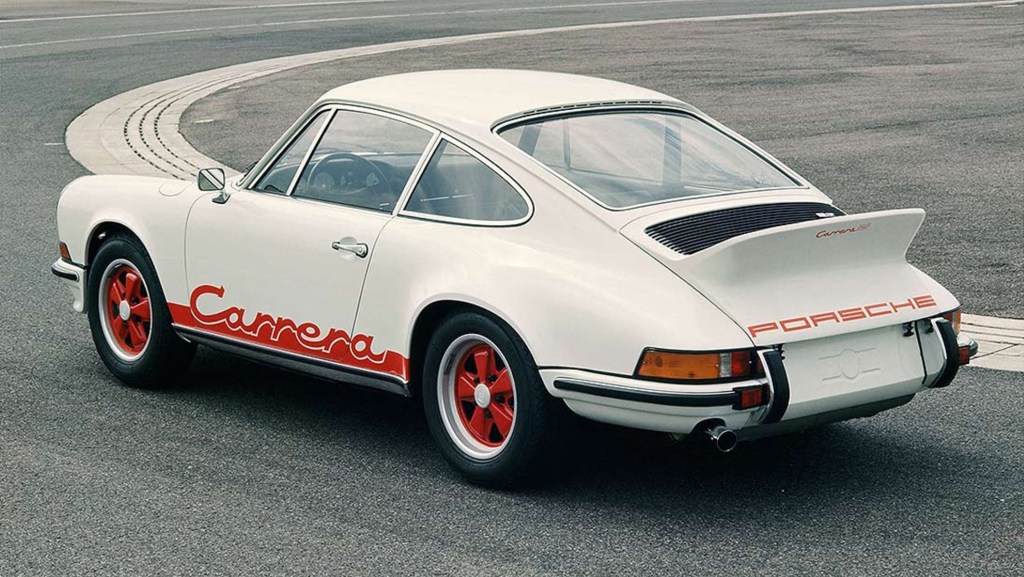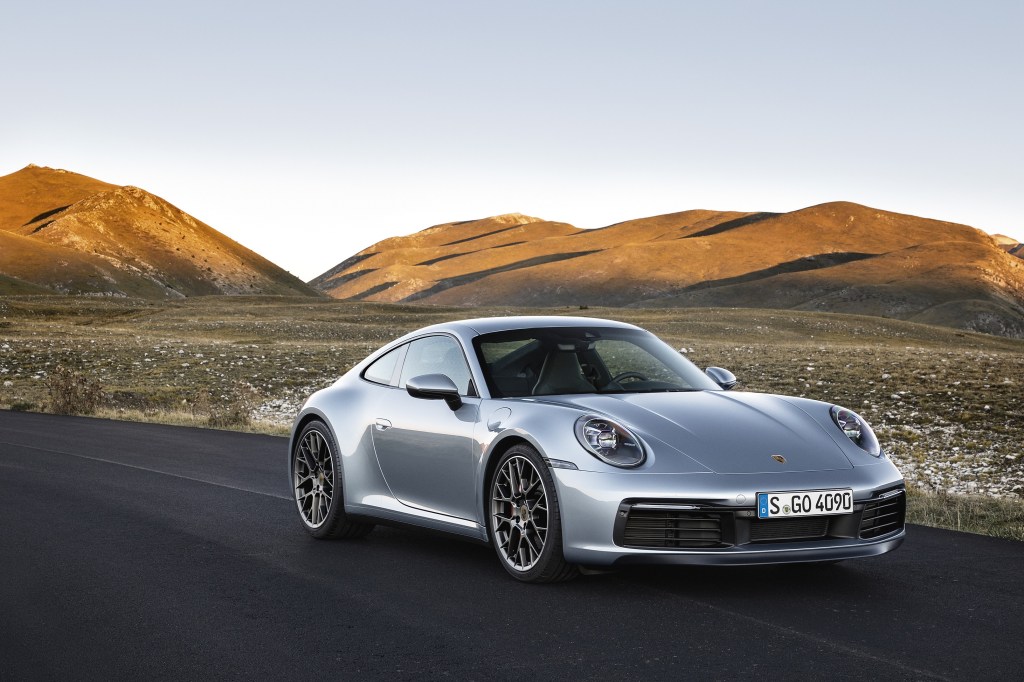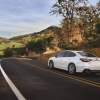
Why Is the Base Porsche 911 Called ‘Carrera’?
Trying to comb through the Porsche 911 lineup can be a snarly task for the uninitiated. Case in point, the 2022 911 GTS is available in five different forms. Still, even the most twisted branches of the family tree stem from the same trunk. For the 911, that trunk is the Carrera, the base model. And the base 911 bears that name for a very on-brand reason: racing.
The Porsche 911 Carrera owes its name to a famous—and famously difficult—race

Now, originally, the base Porsche 911 was just that. When Porsche unveiled its now-iconic rear-engine sports car to replace its previous rear-engine sports car, it was just called ‘911.’ Well, it was first called ‘901,’ but legal issues required a name change.
Regardless, the first 911 variants mostly used single-letter designations, Road & Track explains. The only real exception was the open-top Targa. But after several years of careful evolution, Porsche introduced a new variant with a full name: the 911 Carrera RS. The Carrera RS 2.7, as it’s often called, is the first 911 designed as a road-legal track car, R&T says. And that’s not hyperbole.
Underneath its oft-imitated ducktail spoiler is a mechanically-fuel-injected flat-six, enlarged from 190-hp, 2.4-liter to 210-hp, 2.7-liter form. The 1973 911 Carrera RS also has upgraded suspension, better brakes, and wider rear tires. Also, even in ‘luxurious’ Touring spec, it’s extremely light. Thanks to fiberglass and thinner-than-stock steel body panels, it weighs less than 2400 pounds. And the 1974 Carrera RSR IROC went even further with the weight-saving measures and racing focus.
But Porsche didn’t pull that name out of thin air. Although the 911 never raced there, Porsche had a lot of success at the Carrera Panamericana. A five-day, 2100-mile race across the Mexican stretch of the Pan-American Highway, the Carrera Panamericana was a grueling, brutal endurance test. Racers sped around tight bends and over mountains, shivering at some points and broiling at others. It was an extreme competition, not to mention extremely dangerous. Hence why, even though it only started in 1950, fatalities forced the race to shut down after 1954.
Before that happened, though, it made stars out of several cars. The Mercedes Gullwing, for example, cut its teeth down in Mexico. So did the Porsche 550 Spyder, winning its class in the 1953 and 1954 races, coming in third and fourth overall in the latter. This enshrined the ‘Carrera’ name in Porsche history, which made it an excellent name for the most racing-focused versions of first the 356 and later the 911.
When did the base Porsche 911 become a Carrera?
In short, the first Porsche 911 Carrera was named to honor the brand’s past racing successes. But it wasn’t the base model. Rather, it was initially the highest tier on the 911 ladder. And while the Turbo later supplanted it, it remained above other 911 trims—for a time.
However, in 1978, Porsche discontinued the Carrera in favor of the 911 SC, or ‘Super Carrera,’ which became the base model. Keep in mind, at this point Porsche thought its rear-engine sports car had no future, especially with tightening emissions regulations on the horizon. But thanks to the intervention of then-CEO Peter Schutz, the 911 left the chopping block.
Then, in 1984, to underline the 911’s continued importance, Porsche dropped the SC name in favor of an old favorite. Yup, the 911 Carrera was back, this time with a new 3.2-liter flat-six, hence its common nickname ‘Carrera 3.2.’ Yet, like the now-discontinued SC, it was now the base model.
And while later 911s would temporarily bring back the RS designation, the base 911 has been the Carrera ever since.
How much does an original Carrera cost compared to the 2022 one?

Admittedly, the Porsche 911 Carrera is rather different from the 1973 Carrera 2.7 RS and 1984 Carrera 3.2. It’s bigger, heavier, more powerful, more luxurious, turbocharged, and you can’t get it with a stick. But for all that, it’s still of the best sports cars money can buy.
Speaking of money, while a G-Series Carrera doesn’t cost as much as the 2022 model, the OG one is on another level. You can get a good-condition 1984 911 Carrera for around $55,000 these days, Hagerty claims. That’s roughly half what a base 2022 911 costs. Meanwhile, a fair-condition 1973 Carrera 2.7 RS Touring costs about $245K—and the Lightweight version is more like $550K, Hagerty says.
Or, you know, you could pick up a 996 and save some cash. After all, a base 966 is still a Porsche 911 Carrera.
Follow more updates from MotorBiscuit on our Facebook page.


